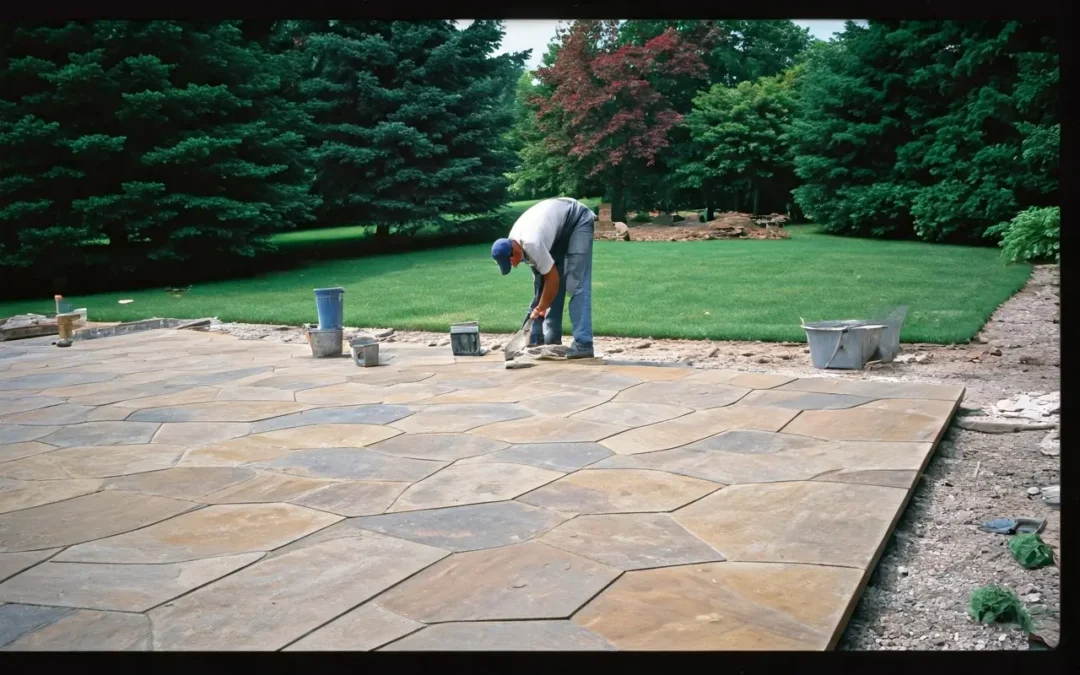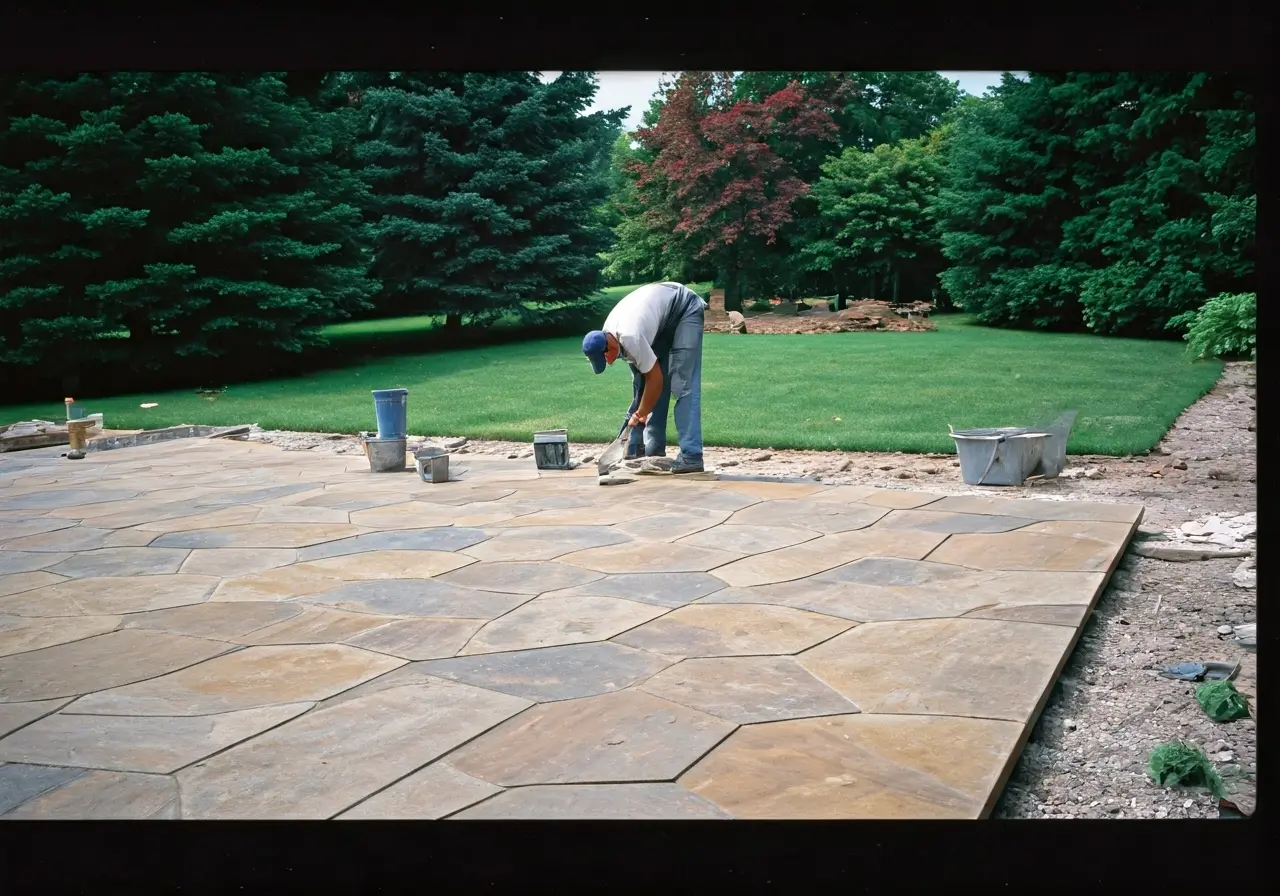Creating beautiful outdoor spaces requires a blend of art and science. Quality masonry is at the heart of this process, marrying aesthetics with durability and function. In this blog, we’ll explore how you can achieve breathtaking outdoor environments through expert masonry techniques.
Understanding the Basics of Quality Masonry
Masonry is more than just construction; it’s about building with artistic vision and technical precision. A solid foundation in the basics is crucial for anyone interested in creating long-lasting and visually appealing outdoor spaces. Understanding the fundamental principles of quality masonry involves not only knowing how to cut and apply materials but also mastering the art of alignment and proportion. The alignment ensures that each piece fits seamlessly with the next, creating a sturdy yet elegant structure. Proportion, meanwhile, gives balance and harmony, allowing each component to play its part without overwhelming the whole. This balance is essential in gardens, patios, and other outdoor settings where space is at a premium.
An appreciation for masonry’s long history can further enhance one’s ability to execute superior craftsmanship. Masonry dates back to ancient civilizations, where it was used to create both monumental structures and everyday items with equal attention to detail. The use of historic methods serves as a reminder that modern masonry requires an understanding of both traditional and contemporary practices to achieve excellence. Through studying these timeless techniques, today’s craftsmen can learn to incorporate both functionality and aesthetic value into their works.
The Aesthetic Appeal: Choosing the Right Materials
Selecting the right materials is key to achieving the desired look and feel of your outdoor space. From brick and stone to pavers, each material offers unique textures, colors, and patterns that contribute to the overall aesthetic. For instance, natural stone can add a rustic charm, while bricks provide a more traditional appearance. When deciding on materials, consider both the visual impact and how they will weather over time. The choice of material not only affects the immediate appearance but also determines the long-term durability of the space.
Beyond just appearance, the right materials can enhance the structural integrity of an outdoor space. Factors such as climate and exposure to elements should influence the material choice. For example, freeze-thaw cycles can cause certain materials to crack, affecting not only aesthetics but safety. Opting for mature, hard-wearing materials suited to the environment will ensure longevity and simplicity in maintenance. Engaging with a professional can offer insights into the latest innovations in material science that may benefit both the functionality and style of your design.
Techniques for Superior Craftsmanship
Quality masonry techniques are the cornerstone of successful outdoor projects. Proper alignment, cutting, and layering are just a few of the skills essential to creating structures that not only look great but also stand the test of time. Mastery in these areas leads to constructions that can resist weathering and wear, maintaining their beauty for decades. Techniques such as the dry stone wall method involve carefully placing stones without mortar, relying on gravity and friction for stability. This method not only preserves the natural aesthetic but also provides a highly durable structure.
Another crucial technique involves the use of appropriate bonding systems. In masonry, bonding refers to how the bricks or stones are arranged, creating patterns and bindings that add both strength and visual interest. The most common is stretcher bond, where units are staggered in a single row. However, more intricate patterns like herringbone or basket weave can be used to create eye-catching designs. Incorporating these techniques requires precision and an understanding of the complexities involved, ensuring every layer contributes to the overall cohesiveness and strength of the construction.
Balancing Functionality with Design
Functionality must be balanced with design for an outdoor space to be truly successful. Consider the intended use of the area and incorporate elements like seating, pathways, and even fire pits to enhance both utility and aesthetic appeal. The evolving lifestyle and need for multi-use spaces have prompted designers to focus on flexibility. The integration of furniture or installations that serve multiple purposes can create a functional flow in your outdoor area and a pleasing visual narrative. When planning, keep in mind how different elements support each other and interact within the overall layout.
Balancing these elements requires a keen understanding of space management and perspective. One approach is the strategic use of focal points to draw the eye and facilitate movement. For instance, a carefully placed pergola can create a visual anchor that organizes surrounding paths and seating arrangements. Additionally, combining traditional elements like cobblestone paths with modern accents such as LED lighting can enhance nighttime usability without sacrificing charm. Thoughtful layout and planning ensures the space functions as an extension of the home, offering a seamless transition from indoors to outdoors.
Sustainability in Masonry Practices
With growing awareness around environmental impact, sustainability has become a crucial factor in masonry. Using eco-friendly materials and methods not only benefits the planet but can also add unique character to your outdoor spaces. Many entities now prioritize the sourcing of materials that have minimal environmental impact, such as recycled bricks or stones reclaimed from prior constructions. These materials, apart from being sustainable, tend to be more durable and offer unique patinas that cannot be replicated by newer counterparts. This reuse of materials is part of a broader initiative to reduce waste in construction.
Furthermore, practices like rainwater harvesting and permeable paving are being incorporated into outdoor spaces designed with sustainable principles. Permeable paving, which allows water to pass through, reduces runoff and erosion—key environmental concerns in urban planning. Innovations in masonry also include the utilization of geopolymer cement that has a lower carbon footprint than traditional Portland cement. This approach not only lowers emissions associated with material production but results in a uniquely resilient final product.
Integrating sustainability doesn’t mean compromising on beauty or functionality. In fact, many sustainable designs capitalize on natural aesthetics, blending seamlessly with gardens and native landscapes. The choice to implement such sustainable methods offers not only potential savings but also a sense of contributing to broader ecological wellbeing. By moving towards sustainable masonry, we are not only preserving the environment but also upholding a commitment to quality and craftsmanship for future generations.
Crafting Timeless Outdoor Spaces with Quality Masonry
By mastering the art and science of quality masonry, you can transform any outdoor space into a sanctuary of beauty and functionality. Whether it’s the rustic charm of stone pathways or the elegant lines of a perfectly laid patio, quality masonry makes a difference that lasts. With the right skills and a keen eye for detail, your outdoor spaces can become a masterpiece.



